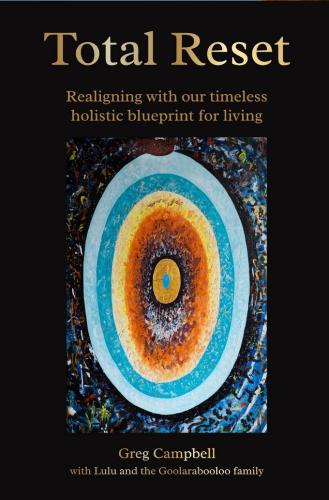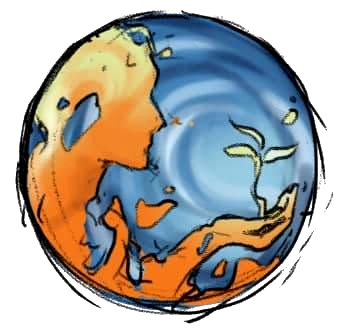Total Reset

Total Reset
A compelling story of the author's transformational journey from childhood to decades spent with an aboriginal community in Australia, Greg Campbell offers a trenchant critique of today's dominant economic practices as he deeply explores the ethics and practice in cultures that have been deeply woven -- spiritually and physically -- into their territories for tens of thousands of years.
Drawing principles from the aboriginal practices he offers a complete and coherent approach as an alternative to modern economic practices and models that are manifestly killing the earth and disempowering people. Many of these approaches will be familiar to regenerative practitioners, but their presentation in context and as a whole will be inspiring to many.
Not everyone will agree with every part of Greg Campbell's massive work that satisfies on so many levels: as a story, as a social critique, as a personal deep transformation journey, and as an eye-opening revelation of what it means to be within and part of an aboriginal culture.
Campbell's pronouncements about the origins of today's degenerating dominant cultures and his remedies will be considered radical by many. They are.
However, one reacts to this book, it argues and supports its arguments with a great deal of hard data, actual practice, and compelling reasoning drawing on his personal observations and the wisdom of countless generations of indigenous people of North West Australia.
Audio book is superb listen, with top quality voice acting.
From the publisher: "Eight of the first 16 chapters in the three-part, 682-page printed book and in the 36-hour, 28-minute audiobook narrated by Mark Coles Smith trace the rise of civilisation, how and why modern societies function as they do, and provide pointers to what is coming down the pipeline, interspersed with hard evidence of the rapidly deteriorating state of our world.
Those chapters alternate with eight others containing stories of the author’s life journey that led to his 1991 encounter and subsequent years with Lulu, a powerful, widely respected Aboriginal maja (Law keeper; in his case of two Traditions) and maban (shaman) in Australia’s remote West Kimberley region.
Lulu and the Goolarabooloo people, realising it was time to share tens of thousands of years of transmitted knowledge about the nature of reality and the role and place of humans in sustaining life on Earth, gradually revealed to the author a radically different window through which to look at reality in the form of the original knowledge carried by the First Peoples. Much of the public component of that knowledge is shared in the 312 pages that comprise Part 2 of the book (Chapters 17-29).
That is where we enter the world of traditional Aboriginal people such as Lulu who lived in the holistic experience of the interconnectedness of all elements of life, material and non-material. That oneness appreciation was characterised by a recognition of all forms of existence as holding their given Law or principles for operating as a coherent part of the whole, their blueprint for being. Known by the First Australians as the Law of the Dreaming, every senior Law keeper with whom the author associated emphasised people lived in accord with it for thousands of generations, in their words, “since the beginning.”
They maintained that the “dreaming of the original creator beings” gained expression as the political, social and economic constructs of their many different societies and enabled people to live as autonomous beings in dignity and freedom, free of poverty and wars of conquest and with the regenerative cycles of life sustained rather than degraded by human activity. Part 2 explores common features of those various constructs, likely pointers to sapiens’ blueprint.
As widespread loss of that applied original knowledge may well be the root cause of the endless wars, ongoing ecological destruction and pervasive inequities and poverty, its re-emergence is likely to generate a total reset of political, social and economic systems, structures and values without which the end result for humanity (possibly this century, on current trends) is not difficult to predict.
That is exemplified in Part 3 whose first two chapters tell a real-life story of a concerted effort to exploit and degrade sacred land in the relentless quest for growth and profits as global corporations and governments joined together to attack the very foundations of life. The Battle of Walmadany vividly shows what is happening not only in Australia and in many countries but also demonstrates the power of people united who hold respect for the cradle of life, our natural world and its inhabitants.
As replacing exploitative structures and systems with life-sustaining ones calls for a return to the roots of what it means to be human in the context of the whole, the third chapter of Part 3 consolidates pointers to five holistic principles of society, a composite blueprint for living that emerges from the original knowledge presented in Part 2. The principles span (1) humanity’s non-material context, spiritual reality; (2) humanity’s material context, the natural world; (3) social organisation; (4) the economy; and (5) the place and role of the individual.
That blueprint constitutes a lens for viewing reality in a different light, one able to reveal solutions not previously visible, as exemplified in the chapters following the Battle of Walmadany which outline a range of initiatives – global, national, regional-local and individual – for humanity to re-align with its purpose and place on Earth.
They are initiatives the author discerns as aligned with sapiens’ holistic blueprint when solutions to challenges facing the world are considered in the light of original knowledge, just some of a likely wide range of life-affirming initiatives waiting to manifest which may become visible to those who choose to look at the way forward through any window of original knowledge.
Total Reset is that rare gift, offering the opportunity to view things in a fresh way, opening the space for the appearance of innovative solutions for returning our Whole Earth system to balance."
Published by Total Reset
HT: Willow Berzin
